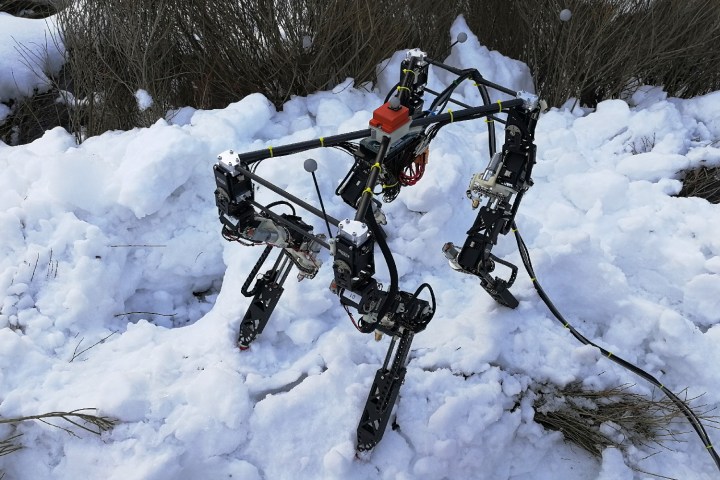
Watching machine learning take place in real time can be a pretty astonishing experience. Like seeing a kid growing up, only compressed into a shorter time frame, you get to witness early failed attempts gradually give way to competency and, eventually, a high level of skill. That is thanks to the way such systems learn, based on trial and error as they try and achieve a specific goal. For the latest example of that, look no further than DyRET (Dynamic Robot for Embodied Testing) the robot. Created by researchers at Norway’s University of Oslo, it’s a quadruped robot — reminiscent of Boston Dynamics’ four-legged robots — which uses evolutionary algorithms to figure out efficient locomotion. In other words, unlike Boston Dynamics’ robots, DyRET learns to walk on its own.
The results are like that famous walking scene from Disney’s Bambi with some high-end robotics thrown in for good measure!
“DyRET is a four-legged mammal-inspired robot platform I’ve been making as part of my Ph.D.,” Tonnes Nygaard, a robotics researcher with the Engineering Predictability With Embodied Cognition project, told Digital Trends. “What makes this robot different from other robots is that the robot itself can modify the length of the legs while operating. Robots are used in more and more complex and changing environments, and being able to do this gives the robot the unique ability to adapt not only the way it is walking or acting, but the body of the robot as well.”
The robot’s gait is controlled by eight different parameters. These dictate aspects of its movement such as how long each step should be or how high the robot must lift its extendable legs. The evolutionary algorithms help optimize these parameters and figure out how best to move about, while being as stable and speedy as possible. Like natural selection in the real world, the evolutionary algorithm means the “fittest” solutions are passed onto the next generation — resulting in a Darwinian process which plays out far more rapidly than would be seen in the evolution of, say, a species of animal adapting to a new climate or terrain.
“This robot is a first attempt at a complex robot with self-changing morphology in hardware, and will serve as a research platform,” Nygaard continued. “A huge part of evolutionary robotics research is today done in simulation, due to the ease and speed of implementation and testing. Real-world environments have a richness and natural noise that is impossible to replicate perfectly in simulation, and I believe the way forward for the field is to start moving more of the research effort into hardware experiments.”
Editors' Recommendations
- CyberOne robot is Xiaomi’s answer to Tesla Bot
- Space station’s new robotic arm springs to life
- Watch Ford’s robot test drivers take a car for an on-the-spot spin
- Evolving, self-replicating robots are here — but don’t worry about an uprising
- Smart dummies: How robotic tackling tech is transforming football practice


